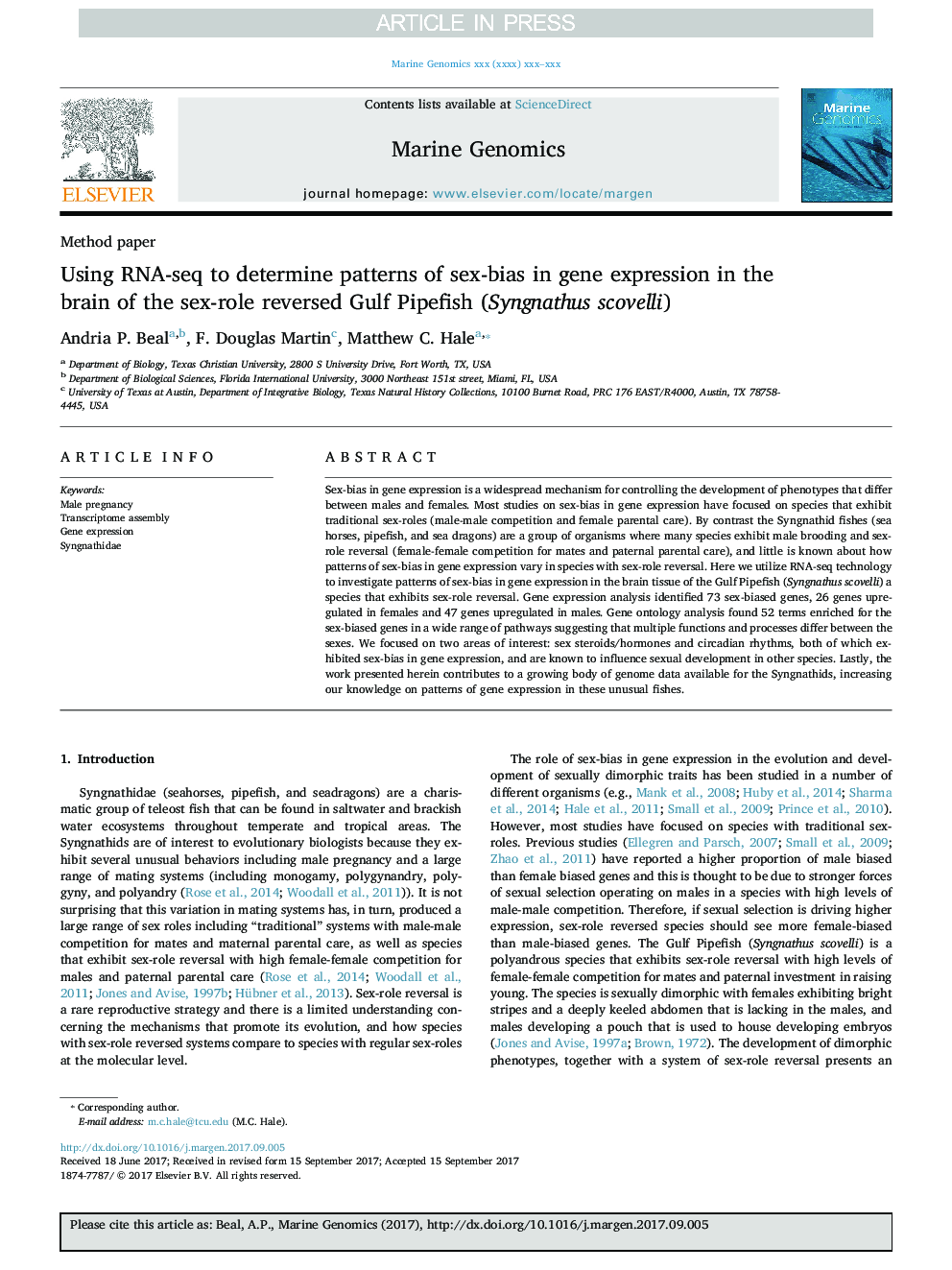| Article ID | Journal | Published Year | Pages | File Type |
|---|---|---|---|---|
| 8388045 | Marine Genomics | 2018 | 8 Pages |
Abstract
Sex-bias in gene expression is a widespread mechanism for controlling the development of phenotypes that differ between males and females. Most studies on sex-bias in gene expression have focused on species that exhibit traditional sex-roles (male-male competition and female parental care). By contrast the Syngnathid fishes (sea horses, pipefish, and sea dragons) are a group of organisms where many species exhibit male brooding and sex-role reversal (female-female competition for mates and paternal parental care), and little is known about how patterns of sex-bias in gene expression vary in species with sex-role reversal. Here we utilize RNA-seq technology to investigate patterns of sex-bias in gene expression in the brain tissue of the Gulf Pipefish (Syngnathus scovelli) a species that exhibits sex-role reversal. Gene expression analysis identified 73 sex-biased genes, 26 genes upregulated in females and 47 genes upregulated in males. Gene ontology analysis found 52 terms enriched for the sex-biased genes in a wide range of pathways suggesting that multiple functions and processes differ between the sexes. We focused on two areas of interest: sex steroids/hormones and circadian rhythms, both of which exhibited sex-bias in gene expression, and are known to influence sexual development in other species. Lastly, the work presented herein contributes to a growing body of genome data available for the Syngnathids, increasing our knowledge on patterns of gene expression in these unusual fishes.
Related Topics
Physical Sciences and Engineering
Earth and Planetary Sciences
Earth and Planetary Sciences (General)
Authors
Andria P. Beal, F. Douglas Martin, Matthew C. Hale,
